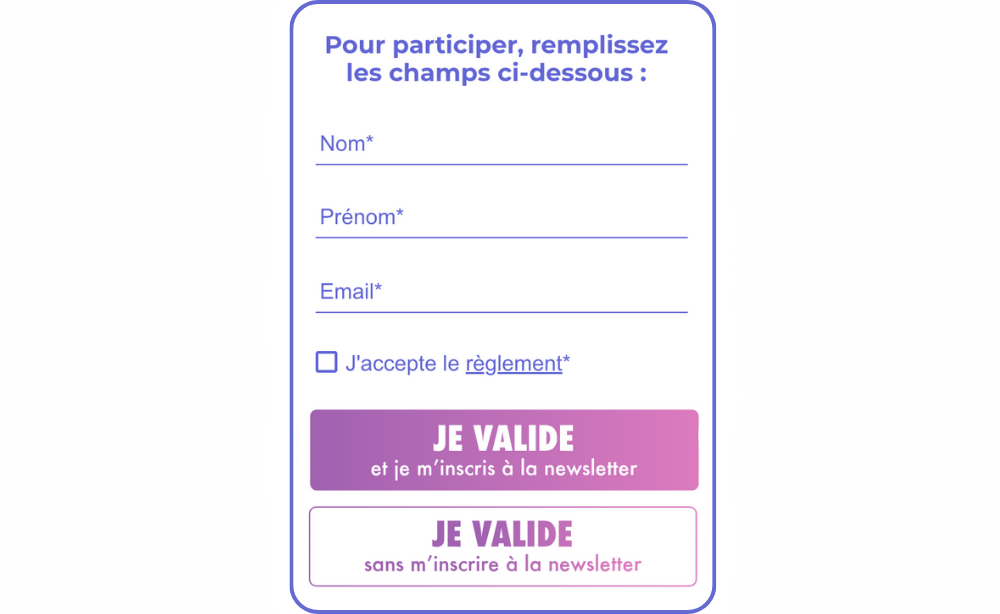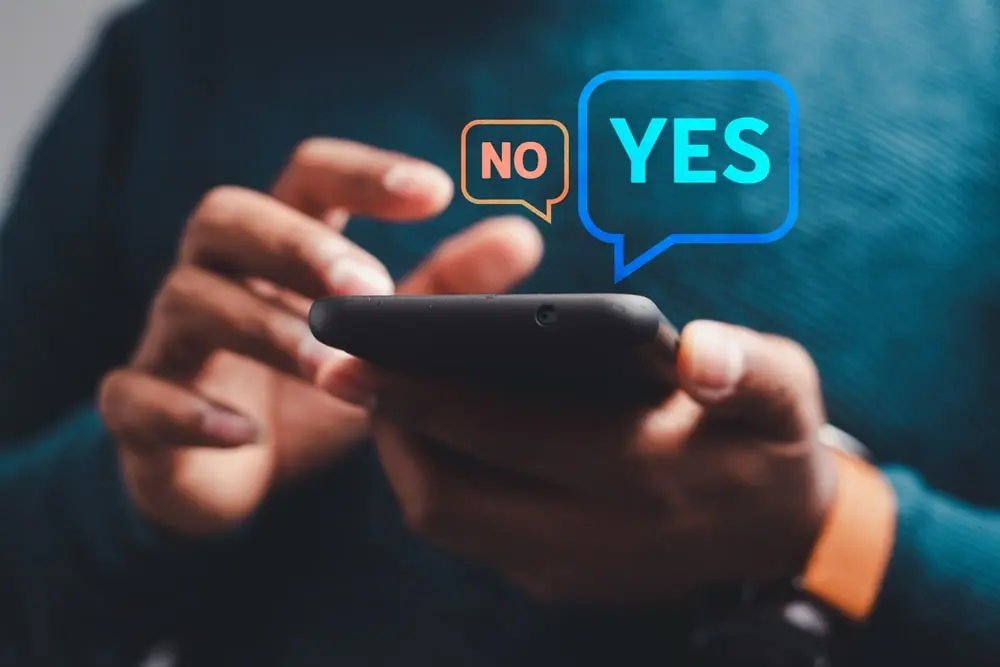Consent has become a central element in the interaction between consumers and brands. In fact, more and more users are concerned about the privacy of their personal data. respect for their privacy. Mais aussi à s’agacer de recevoir des messages (emails, SMS) d’entreprises à qui ils n’ont pas donné l’autorisation de les contacter.
To protect individuals, but also to ensure that brands communicate with potential customers who are interested in what they have to offer, there is a simple tool: opt-in. Definition: this technique involves obtaining the prior consent of a person before using their data (such as their email address) to send them commercial messages.
Although it is more restrictive for companies, the opt-in principle makes it possible to guarantee the quality of your emailing base. Here are some tips on how to collect opt-ins effectively. We also explain how to renew your expired opt-ins, in particular through gamification and marketing competitions.
What is opt-in: definition
A company wishing to collect data from prospects or customers for use in its marketing campaigns or sales processes must first ask for their consent.
They can choose between several forms of authorisation (or opt-in):
- Passive opt-in. LVisitors agrees to share his information but does not actively do so. They are automatically added to the company’s database, after making a purchase for example. Be careful, because this opt-in does not comply with the RGPD.
- Active opt-in (officially recommended by the CNIL). In this case, the person explicitly ticks a box indicating that they wish to subscribe to a mailing list (such as a newsletter). As with passive opt-in, this box is not ticked automatically. The request therefore comes expressly from the prospect.
Opt-in is the opposite of opt-out. It is a process by which the company acquires the contact information of potential customers by purchasing an email database. The recipients have therefore not given their consent.
The opt-in process can go even further: this is known as double opt-in. In this specific case, a confirmation request is sent by email to the prospect before they are definitively added to a mailing list. For the company, this is a way of asserting its respect for the user’s consent. It also ensures that the email address provided is the correct one.
Double opt-in also allows you to get to know your incoming lead better. La marque peut en profiter pour lui proposer de sélectionner ses centres d’intérêt parmi une liste ou via une animation interactive (comme a swiperfor example). It can then send them more targeted content.
What does the RGPD say about opt-in?
The aim of the RGPD is to protect the personal data of EU citizens, the regulation logically addresses the case of opt-in.. Il insiste notamment sur the importance of transparency in the way companies collect information from consumers. This is particularly true of their personal data, which obviously includes email addresses and telephone numbers (for SMS marketing).
Therefore, to comply with the RGPD, brands must ensure that each form or collection tool is :
- Clear. UAn explicit sentence should inform the person that their personal data will be collected by the company. The brand must also specify how the contact information will be used;
- Transparent. The method for processing and using the data must also be specified;
- Unambiguous. The opinion-gathering form must not be confusing (with a sentence containing a double negative, for example).
The company must then retain the permissions it has been given to protect themselves in the event of a complaint or inspection. Consumers also have the right to inspect and modify their data. It is therefore compulsory to include a description link in each email. This will allow users to tell the brand that they no longer wish to receive communications from them. As a reminder, it is valid for 13 months.
3 marketing ideas to encourage opt-in collection
Collecting opt-ins is therefore not only an obligation, but also an opportunity for brands to create a relationship of trust with their audience. They can take advantage of this to engage users and get to know them better. They can then share more relevant content with them.
Here are 3 marketing strategies to simplify the collection of email addresses.
1. Reward opt-in
A very simple way of encouraging your targets to share their email address and consent to the sending of commercial communications is to offer them a reward in return.
In e-commerce, for example, it is common for brands to offer a 10% discount on the next order of each user who subscribes to their mailing list. This lever can also be used to boost in-store traffic by making the discount valid only at physical points of sale.
2. Asylum parcels and QR codes to collect post-purchase opt-ins
Another effective way of increasing the opt-in rate is to target people who are already familiar with the brand.and appreciate its offer. Asylum-packaging is a strategy that consists of slipping a communication medium, with an opt-in collection tool, into the parcel sent to a customer.
As they have already made a purchase from the brand, they are more likely to agree to receive communications/content from the brand. To facilitate the collection of information and opt-ins, the brand can simply slide in a QR code linking directly to the online registration form.
Depending on the content of the order, the brand will be able to segment its customers more easily. And send them relevant content and offers (by email or SMS).

3. Re-engage your opt-in base before it expires thanks to gamification
As an opt-in is valid for 13 months, it is important to re-engage your customer database before their consent expires. Participants in a previous year’s campaign can therefore be reactivated via a new operation to renew their opt-in.
Gamification is a particularly interesting lever in this case. It makes it possible to collect opt-ins using a fun, interactive format. This marketing strategy naturally encourages the user to interact with the collection form by incorporating game mechanics (such as a pinata or puzzle).
Gamified marketing also boosts the opt-in rate by offering users a reward in return. These may include :
- exclusive offers reserved for newsletter subscribers,
- personalised content ;
- loyalty points to be reused online or in shop.
Playable marketing solutions, such as Adictiz, make it possible not only to collect opt-ins, but also to segment the database according to the dates on which they were collected. The company can then offer new campaigns to participants whose opt-in needs to be renewed.
Conclusion
Opting in is not just a constraint that companies must comply with if they want to respect the RGPD. It’s also an opportunity to build a bond of trust with your audience, to get to know your prospects, and to segment and better engage consumers. Discover our catalogue of interactive animations to make your fundraising more engaging and effective!








